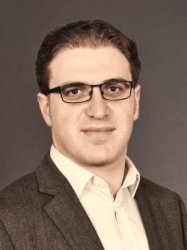BibTex format
@article{Tung:2022:10.1109/jsac.2022.3191354,
author = {Tung, T-Y and Gunduz, D},
doi = {10.1109/jsac.2022.3191354},
journal = {IEEE Journal on Selected Areas in Communications},
pages = {2570--2583},
title = {DeepWiVe: deep-learning-aided wireless video transmission},
url = {http://dx.doi.org/10.1109/jsac.2022.3191354},
volume = {40},
year = {2022}
}

